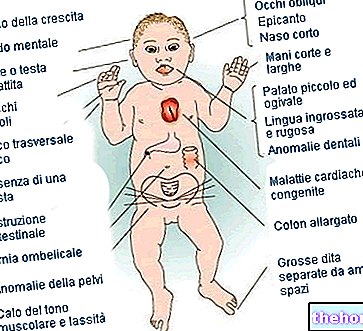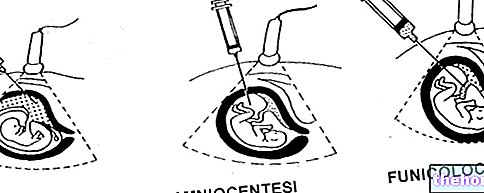Generality
IUI (from the English “Intra-Uterine Insemination”, ie intrauterine insemination) is the simplest of the medically assisted procreation techniques used in the treatment of infertility.

The IUI can be performed on a spontaneous cycle or with moderate pharmacological stimulation for multiple follicular growth. In the latter case, ultrasound checks and hormonal dosages are carried out to follow the course of ovulation during treatment.
Generally, intrauterine insemination is indicated in case of unexplained sterility, moderate alteration of some parameters of the seminal fluid, cervical factors or impediments to sexual intercourse.
Before embarking on this path, tubal patency, the "absence of" infections in the male and female genital tract and an "acceptable quality of spermatozoa (number, movement and morphology) must be verified.
Fertilization therefore takes place directly inside the female genital apparatus. The technique is outpatient, minimally invasive and painless.
IUI is a first level medically assisted procreation (MAP) technique, therefore it is one of the least invasive methods recommended for a couple who want to have a child.
Medically assisted procreation
Medically assisted procreation (MAP) helps couples who want a child but cannot spontaneously get pregnant. This option is indicated by doctors as part of a treatment course, in cases where the infertility of at least one of the two partners is ascertained and there are no other effective therapeutic methods to resolve this condition.
Assisted fertilization makes use of more or less complex techniques, which involve the manipulation of female gametes (oocytes), male (spermatozoa) or embryos.
- The first level methods include: hormonal stimulation, ultrasound monitoring of the woman's ovulation and intrauterine insemination (IUI); the latter is characterized by the fact that fertilization takes place directly inside the female genital system.
- The second and third level treatments, on the other hand, require fertilization to take place first in vitro and include: IVF (in vitro fertilization with embryo transfer), ICSI and GIFT (intratubal transfer of gametes). These procedures are more invasive and are indicated when the infertility to be addressed is severe.
Indications
Intrauterine insemination (IUI) is the medically assisted procreation technique that most respects the normal stages of the processes of reproduction.
This method is indicated in the presence of sterility of unknown origin, to which, that is, it is not possible to attribute a cause. In particular, IUI is recommended in the presence of coital factors, when the spermatozoa have difficulty in reaching the uterus (impotence, modest alteration of the quality of the sperm, etc.) and / or in cases where the male partner has been subjected to a vasectomy. In the latter case, the seminal fluid is obtained through a puncture of the vas deferens and, once a sufficient sample has been obtained, it is used for artificial insemination.
In the presence of a sperm concentration below average, with little motility or with abnormalities in size and shape, IUI may be able to compensate for these problems, as the preparation of the sperm before the procedure helps to separate the viable and motile spermatozoa. preserved, compared to those of lower quality.
Intrauterine insemination can also be used successfully in rather rare situations, such as in the case of men suffering from retrograde ejaculations (inside the bladder), caused by prostatic surgery, or in the presence of some pathologies of the genital tract, such as in the case of hypospadias, in which it is difficult or impossible to have complete sexual intercourse.
IUI is also indicated in the presence of mild endometriosis, ovulatory dysfunctions and immunological factors (production of anti-sperm antibodies by the male or partner).
This approach may also be useful in cases of repeated pregnancy induction failures with ovarian stimulation with drugs and targeted sexual intercourse (ie, during the days of probable ovulation).
The IUI is also suitable in the presence of anatomical and / or functional alterations of the uterine neck (cervical factor) or one of the fallopian tubes (unilateral tubal factor).
Essential conditions for the success of the IUI are:
- Semen sample with mild or moderate oligo-asthenospermia;
- Preserved tubal function (at least unilateral).
The chances of becoming pregnant vary from 10% to 15% per attempt, depending on the underlying disease and the age of the patient.
IUI homologous and heterologous
- Homologous intrauterine insemination consists in the artificial introduction of the partner's seminal fluid into the uterine cavity. This procedure can be useful in cases of just reduced male fertility (total sperm concentration or number of highly mobile spermatozoa slightly below normal) and in the absence of tubal occlusion in the woman.
- Heterologous intrauterine insemination, on the other hand, involves the use of sperm from a donor and is suitable when the characteristics of the seminal fluid are such as to completely compromise reproductive functionality.
Preliminary medical investigations
If a couple fails to procreate despite targeted sexual intercourse, within a period of 12-24 months, it is necessary to investigate the root causes of conception difficulties from a medical point of view.
Before performing the IUI, the doctor meets the two patients and draws up an anamnesis based on their clinical history, then recommends a series of specific tests to rule out the presence of hormonal dysfunctions, pathologies affecting the uterus and tubes, anomalies of the seminal fluid and so on
For the couple
- Hormonal dosages;
- Genetic investigations;
- Immunological tests for the presence of anti-sperm antibodies.
For man
- Spermiogram (examination of the seminal fluid to evaluate its fertilization capacity and other fundamental functions, such as the number, morphology and percentage of motile spermatozoa);
- Spermioculture (analysis of semen to evaluate the presence of infectious agents in the genital organs).
For the woman
- Hysterosalpingography (to check the state of the tubes and their patency);
- Ultrasound of the uterus and ovaries (allows you to check ovulation, the quantity of oocytes, the presence of any cysts, fibroids or other formations);
- Hysteroscopy (endoscopic examination of the uterine cavity);
- Pap test (cytological examination that investigates the presence of an HPV lesion and cell changes in the cervix);
- Search for infectious agents (eg vaginal swab for the search for common pathogens such as Chlamydia and Candida).
If the conditions found cannot be managed with other appropriate pharmacological and / or surgical interventions, therefore if procreation is impossible or in any case the probability of becoming pregnant is remote, the use of medically assisted procreation may be indicated. According to the cause of infertility, therefore, the specialist of the PMA center can recommend IUI or another procedure more suitable for the couple's profile.
How does it take place?
The IUI simply imitates natural reproduction in the uterus: the male semen is deposited directly in the uterus at the moment of ovulation, therefore the meeting of the spermatozoa with the oocyte and fertilization normally take place in the female genital system. This is especially useful when the spermatozoa have difficulty getting through the vagina and cervix due to an obstacle or a lack of sperm quantity or quality.
















.jpg)











